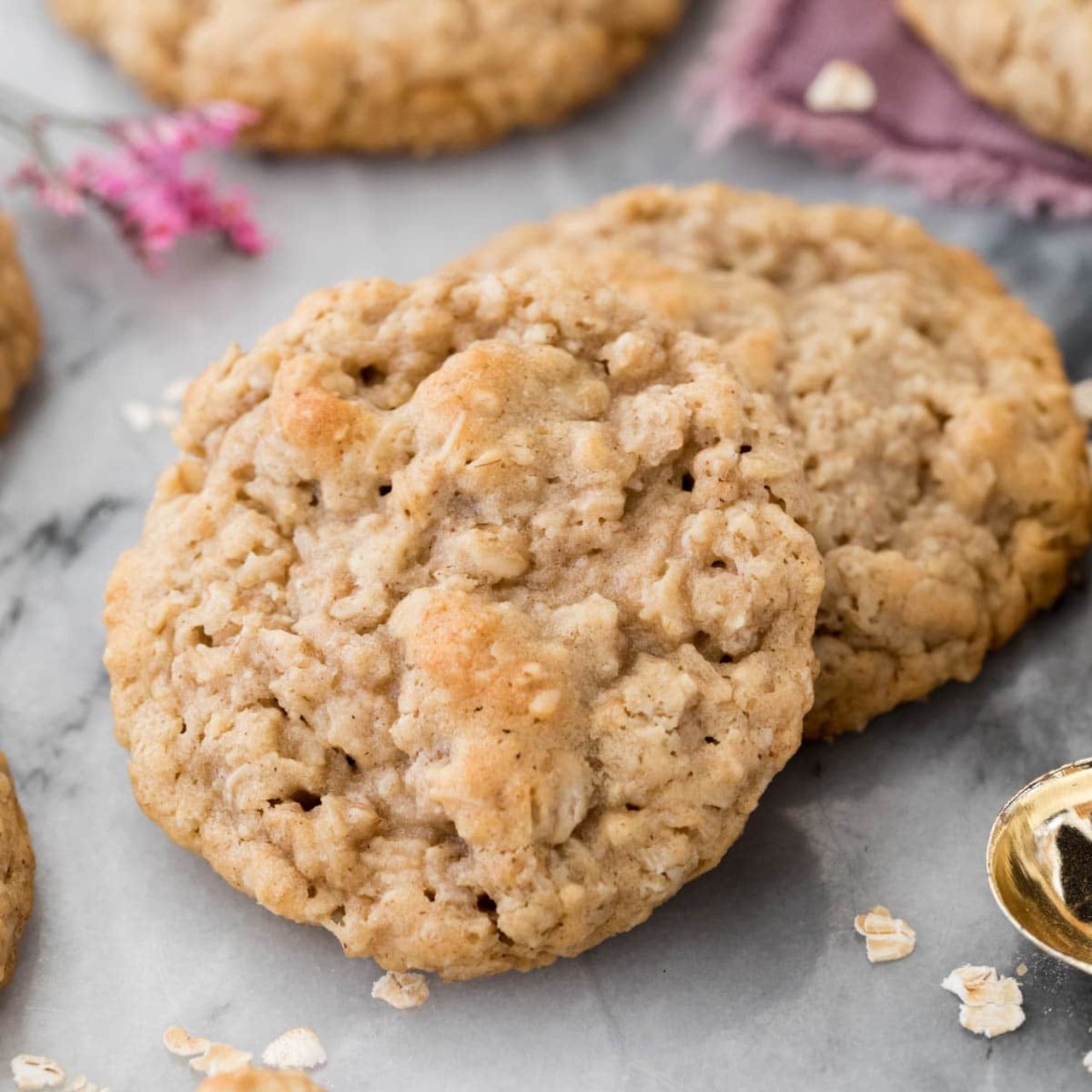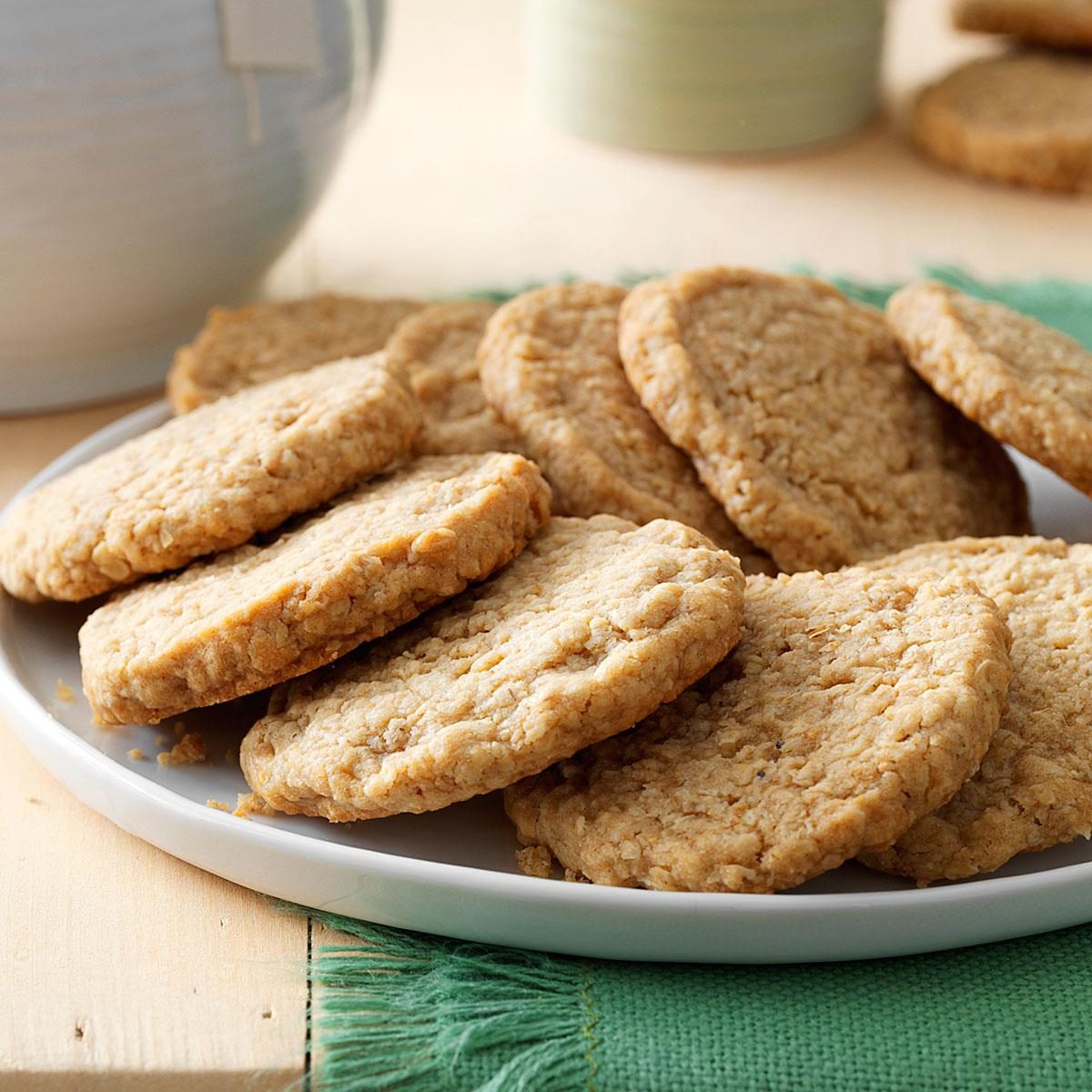Indulge in the irresistible charm of oat cookies, a beloved British classic that has captivated taste buds for generations. From their humble beginnings to their enduring popularity, oat cookies hold a special place in the hearts of UK citizens. Embark on a culinary journey as we delve into the secrets of creating the perfect oat cookie, exploring its rich history, essential ingredients, and delectable variations.
The history of oat cookies in the UK is intertwined with the nation’s love for oats, a versatile grain renowned for its nutritional value and hearty flavor. As early as the 17th century, oats were incorporated into various baked goods, including the humble oat cookie.
Over time, this simple treat evolved into a cherished staple, gracing tea tables and biscuit tins across the country.
Introduction
An oat cookie, also known as an oatmeal cookie or a Scottish oatcake, is a flat, sweet biscuit made with rolled oats and flour. Oat cookies are a popular treat in the UK and are often enjoyed with a cup of tea or coffee.
The history of oat cookies in the UK dates back to the 17th century. The first recorded recipe for an oat cookie appeared in a cookbook published in 1699. Oat cookies quickly became a popular treat among the working class, as they were a cheap and easy way to make a filling snack.
Ingredients

Classic UK oat cookies rely on a combination of simple ingredients to achieve their distinctive texture and flavor.
The following ingredients are essential:
- Oats: Rolled oats form the base of the cookie, providing a chewy texture and nutty flavor.
- Butter: Unsalted butter adds richness and helps the cookies spread slightly during baking.
- Sugar: A combination of granulated and brown sugar provides sweetness and moisture.
- Flour: Plain flour helps bind the ingredients together and gives the cookies structure.
- Baking powder: A small amount of baking powder creates a slight rise in the cookies.
- Salt: A pinch of salt balances the sweetness and enhances the flavor.
Oats
Rolled oats are the preferred type of oats for UK oat cookies. They provide a coarser texture and more pronounced oat flavor than quick-cooking oats.
Butter
Unsalted butter is recommended as it allows for better control over the sweetness of the cookies. Softened butter helps the ingredients combine smoothly and contributes to the cookie’s chewy texture.
Sugar
Granulated sugar provides sweetness and helps the cookies spread during baking. Brown sugar adds moisture and a hint of caramel flavor.
Flour
Plain flour is a versatile flour that helps bind the ingredients together. It provides a sturdy structure for the cookies.
Baking Powder
A small amount of baking powder helps the cookies rise slightly, giving them a more rounded shape.
Salt
A pinch of salt balances the sweetness of the cookies and enhances the overall flavor.
Steps
To achieve the perfect, mouthwatering oat cookies, follow these steps with meticulous attention to detail:
Mixing the Dough
In a spacious bowl, whisk together the dry ingredients – plain flour, rolled oats, baking powder, and ground cinnamon. In a separate bowl, cream together the butter and both sugars until light and fluffy. Gradually add the wet ingredients – eggs and vanilla extract – to the butter mixture, beating well after each addition.
Combining the Ingredients
Gently fold the dry ingredients into the wet ingredients, mixing until just combined. Avoid overmixing, as this can result in tough cookies.
Chilling the Dough
Once the dough is formed, wrap it in plastic wrap and refrigerate for at least 30 minutes. Chilling the dough allows the flavors to meld and the gluten to relax, resulting in a more tender cookie.
Rolling the Dough
Preheat the oven to 190°C (170°C fan-assisted). Line a baking sheet with parchment paper. On a lightly floured surface, roll out the chilled dough to a thickness of 5mm. Use a cookie cutter to cut out the desired shapes.
Baking the Cookies
Place the cookies on the prepared baking sheet and bake for 10-12 minutes, or until the edges are lightly golden brown. Allow the cookies to cool on the baking sheet for a few minutes before transferring to a wire rack to cool completely.
Variations

The classic oat cookie is a versatile base for a wide range of variations. By experimenting with different ingredients and techniques, you can create cookies with unique flavors, textures, and appearances.
Different Types of Oats
The type of oats used in the cookie dough can significantly impact the texture and flavor of the final product.
- Rolled oats: These are the most commonly used oats in oat cookies. They provide a chewy texture and a nutty flavor.
- Quick oats: These oats are partially cooked and rolled thinner than rolled oats. They result in a softer, less chewy cookie.
- Steel-cut oats: These oats are cut into small pieces and have a chewy, hearty texture. They add a rustic flavor to oat cookies.
Serving Suggestions
Indulge in the delectable delights of freshly baked oat cookies. Savor them on their own or elevate the experience with complementary pairings.
In the UK, oat cookies hold a special place in the hearts of many. They are often enjoyed as a comforting treat, paired with a warm cup of tea or coffee.
Accompaniments
- Fruit and yogurt: Enhance the sweetness of oat cookies with fresh fruit and creamy yogurt. Berries, bananas, or apples add a burst of flavor and a nutritious touch.
- Cheese: For a savory twist, pair oat cookies with a sharp cheddar or a creamy brie. The contrast of textures and flavors creates a delightful combination.
- Spread: Spread a layer of your favorite jam, honey, or peanut butter on an oat cookie for a classic and satisfying treat.
Last Point
Whether enjoyed as a comforting snack or a delightful dessert, oat cookies embody the essence of British baking. Their rustic charm, chewy texture, and subtle sweetness make them a timeless favorite. As you master the art of creating these delectable treats, you will not only impress your loved ones but also become part of a rich culinary tradition.
So, gather your ingredients, preheat your oven, and embark on a delightful baking adventure that will leave a lasting impression on your taste buds.
FAQs
What is the secret to achieving the perfect chewy texture in oat cookies?
The key to achieving that irresistible chewy texture lies in the balance of ingredients. Using a combination of granulated sugar and brown sugar helps create a moist and chewy interior, while the addition of rolled oats adds a satisfying bite.
Chilling the dough before baking also contributes to the chewy texture by allowing the flavors to meld and the oats to absorb moisture.
Can I substitute other types of flour for plain flour in the recipe?
While plain flour is the traditional choice for oat cookies, you can experiment with different flours to create unique variations. Whole wheat flour adds a nutty flavor and extra fiber, while gluten-free flour blends can be used to cater to dietary restrictions.
However, it’s important to note that substituting alternative flours may require adjusting the proportions of other ingredients to achieve the desired consistency.
How can I make my oat cookies extra flavorful?
There are several ways to enhance the flavor of your oat cookies. Adding spices like cinnamon, nutmeg, or ginger provides a warm and aromatic touch. Incorporating dried fruits such as raisins, cranberries, or cherries adds a burst of sweetness and chewy texture.
You can also drizzle melted chocolate over the cookies before baking for a decadent treat.
